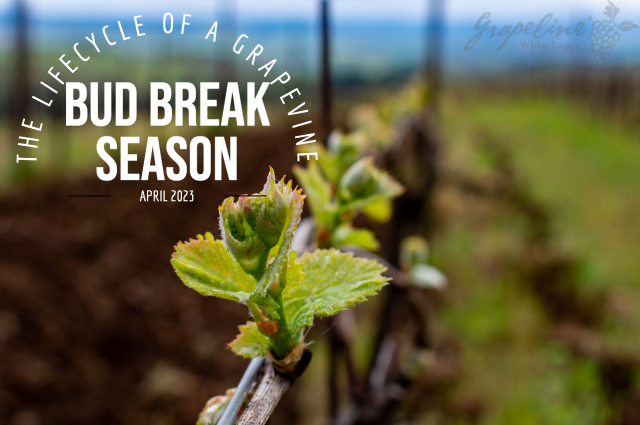
YOUR WINE TOUR ADVENTURE STARTS HERE


As the temperature warms up and the winter chill fades away, the vineyards across the world start to come alive with the first signs of spring. Bud break season is an exciting time for any wine enthusiast as it marks the beginning of a new growing season and the birth of new grapevines. In this blog post, we will take a deep dive into the lifecycle of a grapevine during bud break season, exploring the various stages of growth and the factors that influence them.
First things first, let's start with a little bit of background. Grapevines are deciduous plants that belong to the family Vitaceae. They are grown in various parts of the world, and each region has its unique climate, soil, and topography, affecting how they grow. Grapevines typically grow in a cyclical pattern, with each growing season divided into several stages. Bud break is the first growth stage and is a crucial time for the vineyard as it sets the tone for the rest of the season.
Bud break is the period when the buds on the grapevines start to swell and eventually burst open, revealing the first green leaves of the season. This process usually occurs in the early spring, around mid-March to April, depending on the climate and location of the vineyard. Bud break is a vital time for the grapevine, as it marks the beginning of the growing season, and the vine starts to produce new shoots, which will eventually bear fruit.
December-March From leaf fall following harvest to the beginning of growth in spring, grapevines are considered dormant and look merely like woody twigs. Little activity occurs within the plant during this winter, but from a winemaker’s perspective, there’s much work to be done, with pruning required to cut back the previous year’s canes and the best canes selected to grow new shoots. Besides the harvest, pruning is one of the vineyard's most expensive and essential activities.
March-April The first transformation occurs in early spring when sap exuded by pruning cuts – known as ‘bleeding’ – announces the imminent onset of bud break and the beginning of the vine's lifecycle. The first buds are highly delicate so spring frosts can be perilous in the vineyard. For example, many growers in Beaujolais in France lost all of their buds during the 2016 hailstorms.
March-May Newly emerged shoots will grow very rapidly as temperatures warm. Some viticulturists will prune downward-facing shoots to ensure they all grow upwards, thus reducing the potential crop size but increasing the quality – a vine producing fewer grapes will usually produce more concentrated grapes. Frost remains a risk, as it could return the shoots to a dormant state.
May-June At the onset of summer, the buds begin producing ‘inflorescences’, or flower clusters, which will eventually bloom. These flowers are known as ‘perfect flowers’, as they pollinate themselves without needing bees. As the fertilized ovary develops, it produces green berries in a process known as fruit set. Good weather is vital during the flowering period – too much rain can cause problems that will impact the harvest size and quality down the line.
July-September This stage marks the biggest explosion of life in the vineyard, where the vine shoots mature and veraison – where the green berries change color and ripen – takes place. The chlorophyll green gradually disappears, and each variety reveals its particular pigment. The grapes of white varieties acquire a yellowish hue, whereas those of red varieties go from green to red and/or purplish blue, depending on the variety. After veraison, the seeds are fully formed, acidity is still high, and sugar levels low.
September-October Finally, the climax of the whole process. Once the grapes are fully ripened, it’s time for them to be harvested, which is done either by hand or machine, depending on the vineyard. It’s not uncommon for harvests to occur earlier or later than the months noted above – much depends on the speed of that year’s growing season, while climate change is increasing influence on timings, too.
~ Kay Syrah Wine Country Guru Gal